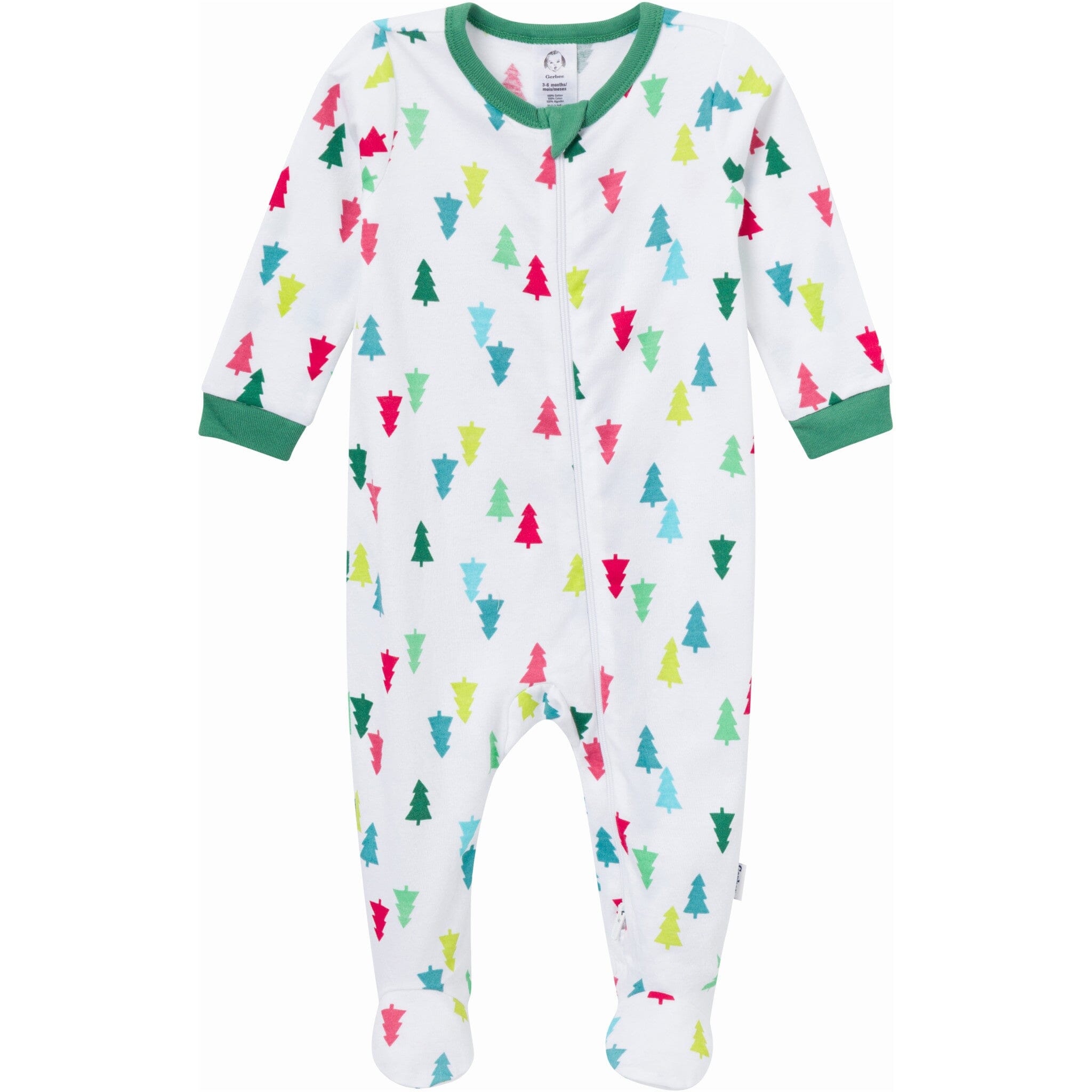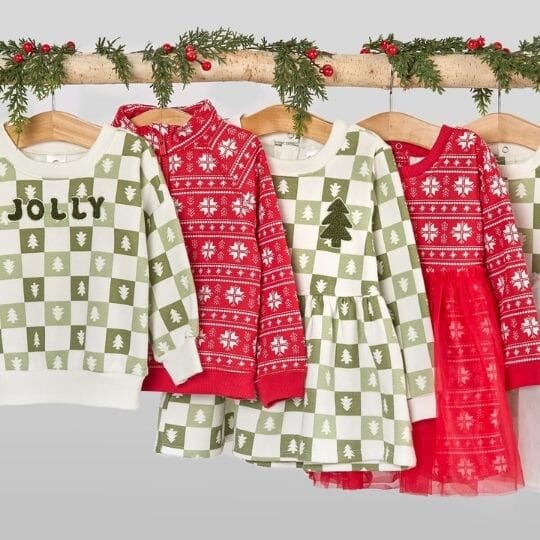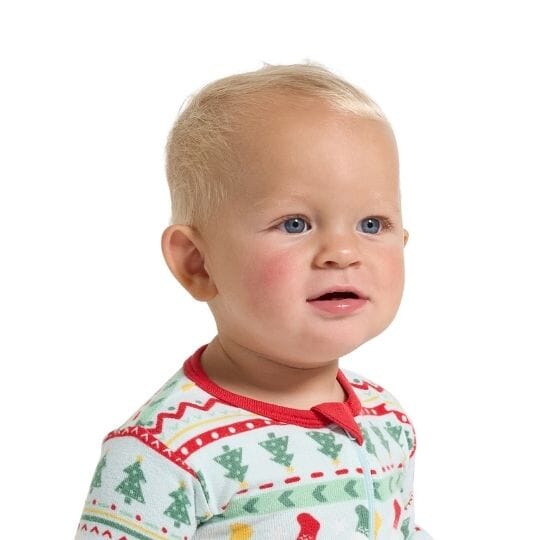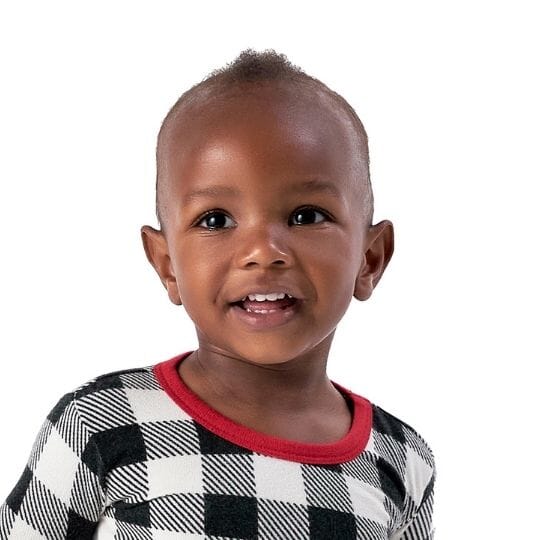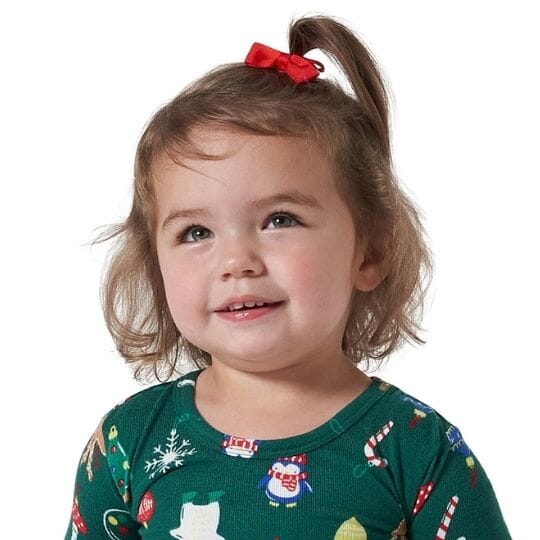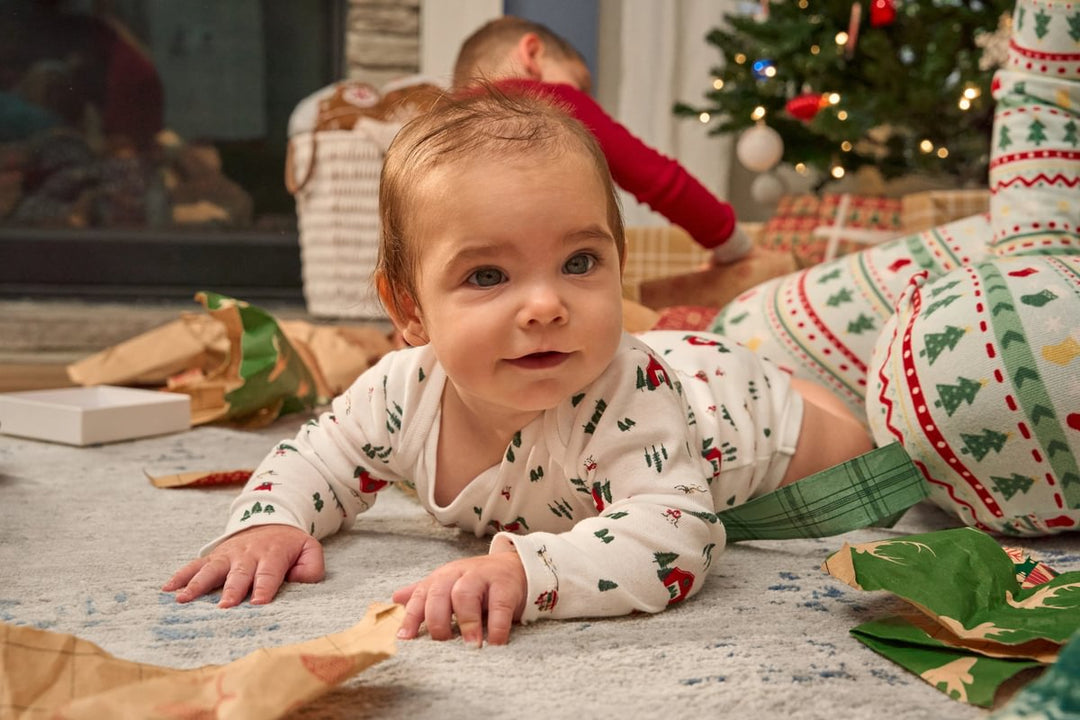How to Dress a Newborn

Newborn babies are delicate creatures. First-time parents are especially cautious with their young infant—and for good reason! It’s normal to worry about everything from how to cradle baby’s head to how to best burp them after a feeding.
One of the most pressing concerns on new parents’ minds is how to clothe their newborn and what it takes to keep him or her comfortable. Whether you are mystified about how to dress your baby without fuss or are unsure how to best keep newborns warm at night, we are here to help! The guide below explains everything from how to dress a newborn to what they should wear depending on the time of day and weather. Keep it handy when building your registry or read it over while baby is taking a nap. Once you purchase the right outfits and practice a few helpful dressing techniques, you will feel more confident than ever about caring for your little one!
Newborn Clothing Basics
A newborn baby’s wardrobe needs a few basic essentials. These include at least five to seven bodysuits, pants, tops and sleepers. Add several pairs of socks, especially if it’s fall or winter. Newborn baby girl clothes are beautiful in yellow, green, pink and lavender. You’ll also find plenty of florals, bird patterns and polka dots. Some of the trendiest newborn baby boy clothes are grey, dark blue, red and black, with designs containing forest animals, stripes and checkers.
Search for outfits with stretchable material at the collar. This feature is common on newborn clothing and makes dressing easier. Buy both Newborn and 0-3 month sizes. If there’s a chance your child will be born before their due date, consider Preemie clothes as well. Many stores and boutiques carry the same fun and comfy styles in the tiniest fits (check out our guide to Baby Clothes Sizes for more tips on which sizes to buy).

|
|
 |
 |
 |
 |
How to Change a Newborn’s Clothes
Since a newborn can’t maneuver their head or neck, it’s important to dress them with the utmost care. The wrong technique could cause discomfort or irritate baby’s skin.
- You can keep baby safe and happy while changing their shirt or bodysuit by gathering the cotton material on each side of the outfit’s collar.
- Gently stretch the collar open until it forms a wide oval or circle.
- Keeping both hands on each side of the collar, carefully pull the top over baby’s head. Don’t be afraid to pause so you can use a hand to support your child’s neck.
- Throughout the entire process, the oval or circle should stay so wide that it never touches their ears or hair.
- Let go of each end once the clothing is safely over the head and around baby’s neck.
- Next, reach back behind your child and pull the bottom bodysuit tab or the rest of the shirt material slack downward. This step makes it easier to get his or her arms inside the sleeves.
- Pull the left sleeve to the side and then gather as much material as you can (as if you’re putting on pantyhose). Hold baby’s arm with one hand and guide the sleeve over their arm with the other. Be sure that the sleeve doesn’t get caught on their fingers.
- Do the same thing on the right side. Once your little one’s arms are in the sleeves, pull the remainder of the shirt or bodysuit down and around over their torso.
- Snap the garment secure as necessary.

When putting leggings or pants on your child, you’ll also want to gather the leg material. Make sure that baby’s entire body, including their head and neck, remains stationary and supported as you slowly pull the garment over your infant’s legs and diaper area. If you find the bottoms aren’t all the way over the diaper, pick baby up and bring the back of the pants up to their waist.
Dressing Baby for Sleep
Newborns get cold easily and have trouble regulating their body temperature, so footed pajamas are one of the most popular types of nighttime attire. They’re an excellent choice for cozy nights, especially when the temperature falls below 70 degrees. If your little one needs an extra layer, try adding a heavier cotton swaddle or a fleece wearable blanket.
If the temperature is above 70 degrees at night, put baby to sleep in a bodysuit and swaddle blanket or sleep sack. Muslin and other cotton fabrics are wonderful choices for wrapping baby in an extra layer in the spring or summer. Soft cotton rompers are helpful for mild nights, especially if baby has long legs and doesn’t fit well into footed PJs.
Clothing Baby in Warm Weather
When your child is still a newborn, you probably won’t keep them out too long in warm weather. If you take them for a walk in the shade or for a car ride, make sure they wear something to help them stay cool. Bodysuits and short-sleeved rompers are perfect choices. Add shorts on top of a one-piece for a cute and stylish look.
Tops and matching shorts sets are also popular. If baby will spend a couple of minutes in the sun, protect them from harmful UVA and UVB rays with a hat with UV blocking material. Lightweight skin-protecting shirts and pants are also available.
Newborn Clothes for Cold Weather
Just a minute or two in cold temperatures can make baby miserable. Keep him or her warm and toasty by covering their head, arms, legs, hands and feet. Newborns should always wear a hat outdoors in the fall and winter. Choose soft beanies for comfort.
Socks, pants and long sleeves are a must. Finish with gloves and a hoodie or heavy jacket as necessary. When in doubt, take a look at what you are wearing and then dress baby in another extra layer. Be on the lookout for signs of overheating. If your little one looks flushed or seems fussy, you may need to take off their coat or mittens.

Dressing Baby Indoors
Most families keep their home between 68 and 76 degrees. If the ambient temperature is on the low end, socks on baby's feet. Footed pajamas may be the go-to outfit for the first two months, while bodysuits become the daily outfit when it warms up in month three.
As long as baby is eating and sleeping well, they’re probably wearing the right clothing. Check the back of baby’s neck or the top of their chest to see if they’re too hot or cold. Otherwise, dressing indoors is easy!
Keeping Your Newborn Well-Clothed and Happy
When it comes to clothing, the newborn phase is fairly simple—although we can’t guarantee anything else during this stage will be as intuitive! Focus on gathering the essential newborn outfits and then follow the proper way to dress baby each time. When you practice these steps and keep an eye on the weather, each changing will become like second nature!


